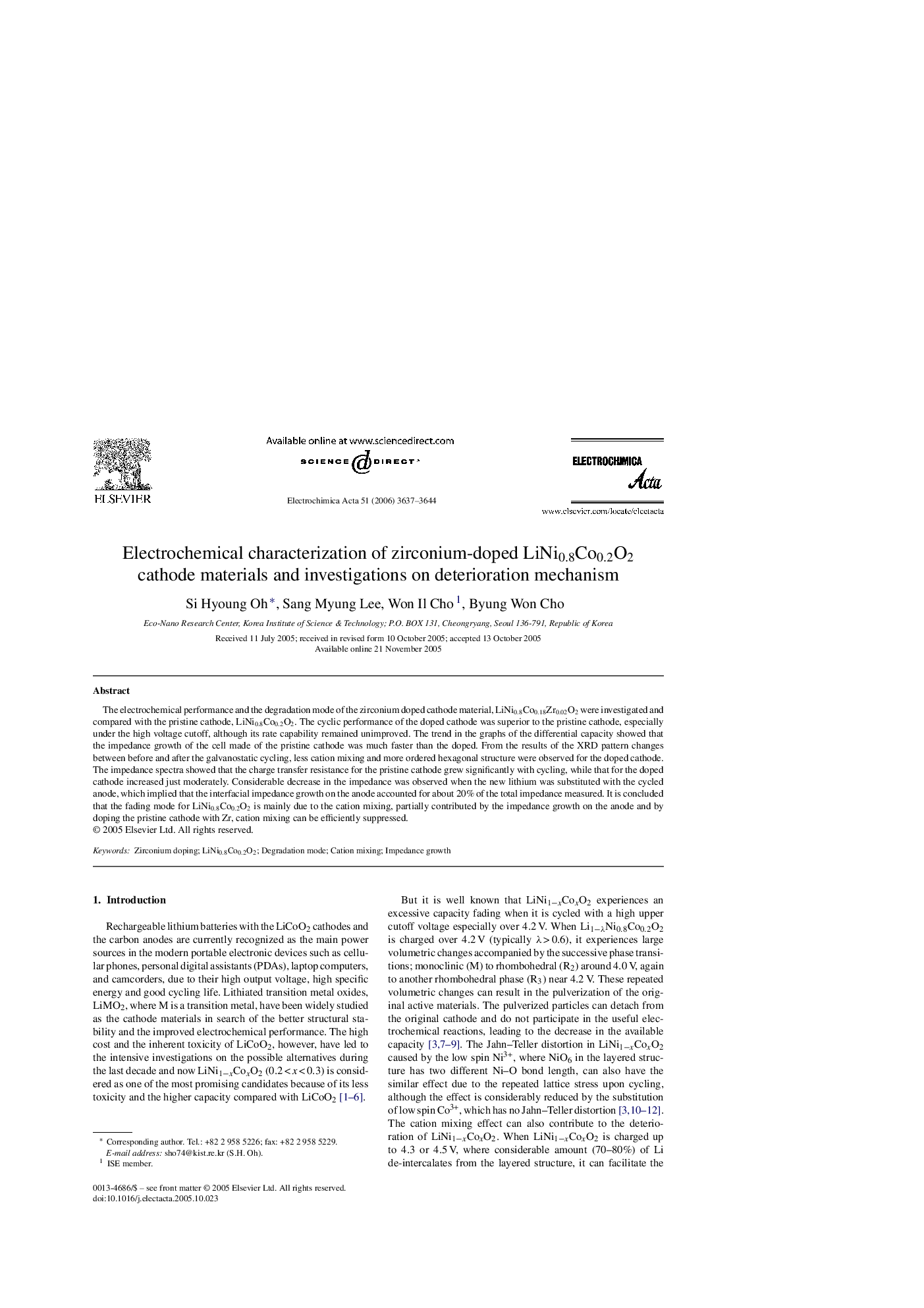| Article ID | Journal | Published Year | Pages | File Type |
|---|---|---|---|---|
| 195840 | Electrochimica Acta | 2006 | 8 Pages |
The electrochemical performance and the degradation mode of the zirconium doped cathode material, LiNi0.8Co0.18Zr0.02O2 were investigated and compared with the pristine cathode, LiNi0.8Co0.2O2. The cyclic performance of the doped cathode was superior to the pristine cathode, especially under the high voltage cutoff, although its rate capability remained unimproved. The trend in the graphs of the differential capacity showed that the impedance growth of the cell made of the pristine cathode was much faster than the doped. From the results of the XRD pattern changes between before and after the galvanostatic cycling, less cation mixing and more ordered hexagonal structure were observed for the doped cathode. The impedance spectra showed that the charge transfer resistance for the pristine cathode grew significantly with cycling, while that for the doped cathode increased just moderately. Considerable decrease in the impedance was observed when the new lithium was substituted with the cycled anode, which implied that the interfacial impedance growth on the anode accounted for about 20% of the total impedance measured. It is concluded that the fading mode for LiNi0.8Co0.2O2 is mainly due to the cation mixing, partially contributed by the impedance growth on the anode and by doping the pristine cathode with Zr, cation mixing can be efficiently suppressed.
